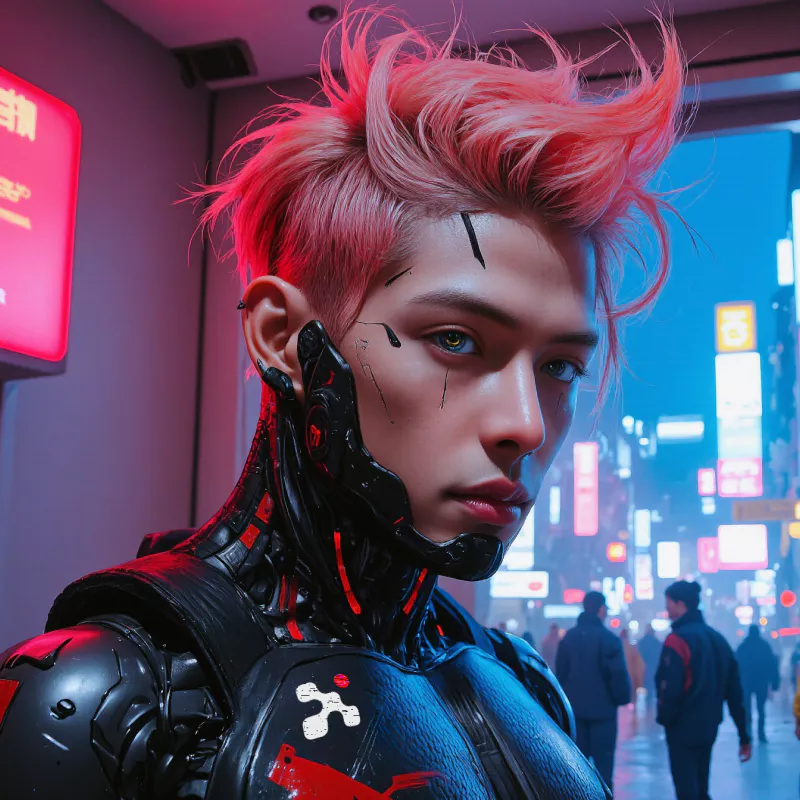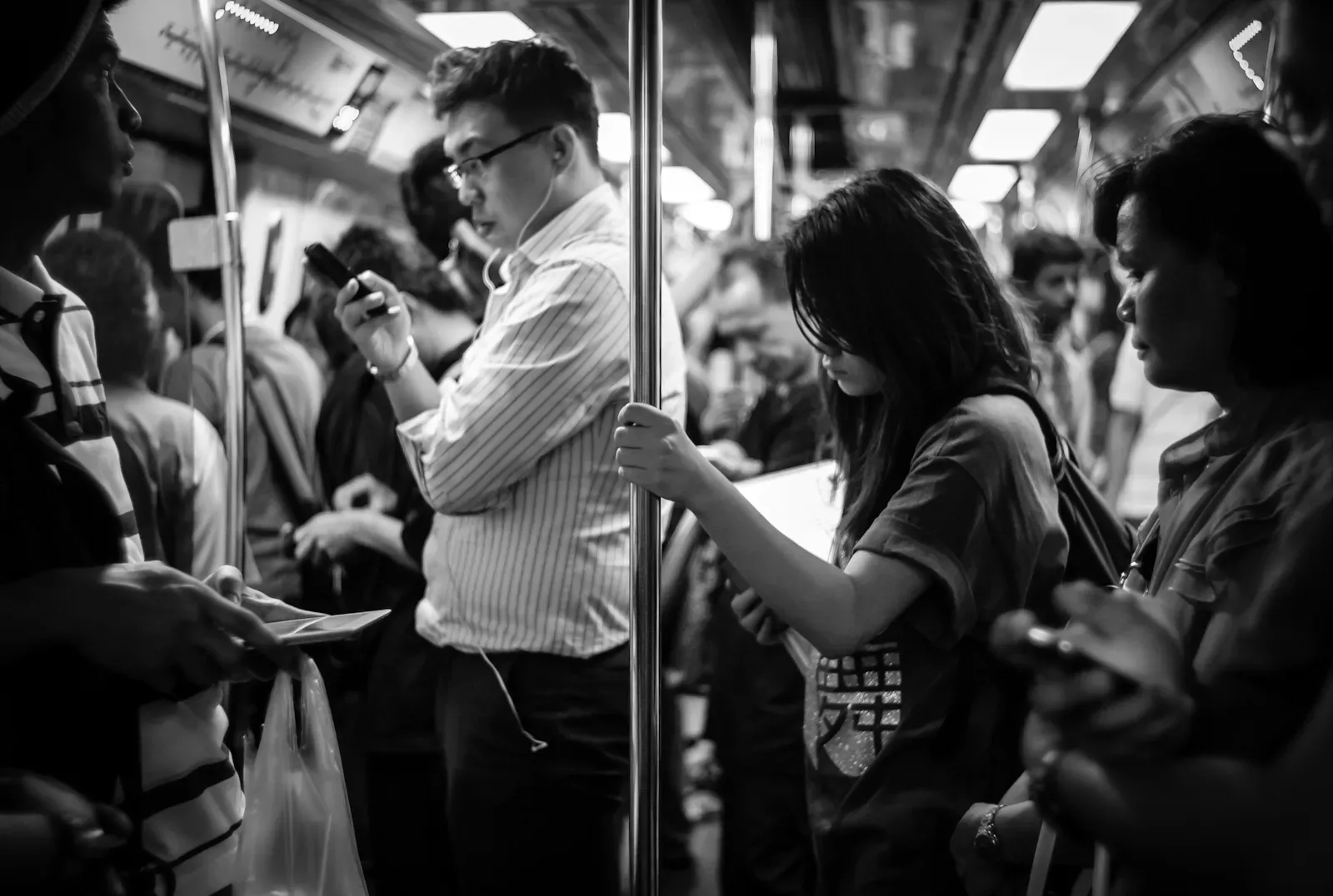Leica M8 - first impressions
 jenxi.com
jenxi.com Vision alchemist crafting strategic innovation & AI adoption. Bridging startups to China's ecosystem advantage. Building a cyberbrain. Registered pharmacist × Brand strategist × Storyteller
My first few photo walks with the Leica M8 has seen a change in the way I shoot. In a nutshell, I’m really enjoying shooting with the M8. It’s like a new lease of life. However, my introduction to the Leica experience is not without some frustrations.
Dave shared with me that shooting with a Leica changed his photography forever. I couldn’t quite grasp what he meant until I started shooting on the M8. Instead of snapping away at interesting subjects, I have slowed down to think more before I shoot.

Wisma Atria looks more like ION Orchard after the renovation.
The photos taken with the M8 have the unmistakable Leica look. Words cannot describe the Leica feel but perhaps a few photos might illustrate my point. If it doesn’t, then Leica might not be a camera you would love with a passion.


Maybe it’s just me but the images from the M8 bear the striking Leica look.
Infra-red sensitivity
I’ve read about how the Leica M8 has infrared sensitivity that makes black fabric appear maroon in photos taken. However, when I purchased the CV 35mm lens from Chiif, he assured me that it only occurred in certain lighting conditions. The issue was found in most of my street shots. I returned to Chiif’s to get a UV-IR cut filter but he was out of stocks. He admitted that he isn’t keeping stocks of the filter as it is not widely sought after now. There are less people using the M8 and those that do would probably have the filter already.
He suggested purchasing the filter online. I didn’t find it worthwhile to have to pay shipping for a filter. I decided that I could simply avoid the problem by shooting in black and white. The M8’s IR sensitivity actually enhances the monochrome images by bringing out more detail and tonality.

Passengers taking the train half an hour before the peak period to avoid the rush hour crowd.
I’m not going to scrimp by forgoing getting an IR filter. I just need to figure out what filter size I would want to invest in. I would need a couple of ND filters, a circular polarising filter and an IR filter. I prefer getting a set of these filters for the same filter size. I’ll need to think about my M lens system and work out a solution where I have the same filter sizes for most of the lenses. There’s always the option of using a step-up ring to allow the lenses to take the same filters.

The M8 doesn’t intimidate my subjects the way my D700 would.

I could go close with a 35mm without disturbing my subject.
Manual focus
The viewfinder of the Leica M8 is larger and brighter than my compact film rangefinder cameras. It should be easier to focus with it but I find myself missing the focus, even on still subjects. I was starting to suspect that it was a case of misalignment of the rangefinder, until I tried to focus using my other eye.
I realised my eye was causing the off-focus images. It was only then that I realised that my right eye, which I shoot with, had blurred vision even with my spectacles on. My right eye has always been the stronger eye and the one with better vision. It turned out to be a case of conjunctivitis.
I’ve been shooting with my left eye until my right eye recovers.

Focus is off but the image still turned out well.
Eye-catching
The Leica M8 has attracted attention of passers-by when I’ve been out shooting. I’ve decided to tape the logo and letters on the front of the camera to make it more inconspicuous. I prefer the look of the M9-P to the M8 and M9. Since I can’t afford it, I’ll improvise with gaffer tape. However, I can’t replicate the engraving on the top plate, found on film Leica Ms and the M9-P. It’s an exquisite touch that I really adore.

While I was fiddling with the M8, these two girls approached me to help them take a couple of photos. One was with a Fujifilm Instax 25s and the other with a Blackberry phone. I don’t know how to use a Blackberry so the photos didn’t turn out too well on the phone.
After snapping the shots, I asked for their permission to be photographed. I still get nervous when approaching strangers for their portraits, so I ended up making mistakes in the shots. I got them to step into the light but I didn’t account for the stronger lighting from the café in the back. In hindsight, I should have gotten them to turn around for better lighting.

Conclusion
While I’m disappointed by the hampered experience due to the conjunctivitis, the overall initiation to the Leica M has been positive. I’m beginning to notice a change in the way I shoot.
The M8’s high ISO performance is better than I first expected. Shots at ISO 1250 were acceptable. Lightroom effectively minimises the noise and the resulting grain is not as crude as those I’ve encountered in other digital cameras.
I intended to keep the X100 for shooting in low light and high ISO. After testing the M8’s ISO performance, I considered selling the X100. But I’m keeping it for now because my girlfriend loves it. The built-in flash on the X100 is handy to have and it automatically exposes for the optimal results.